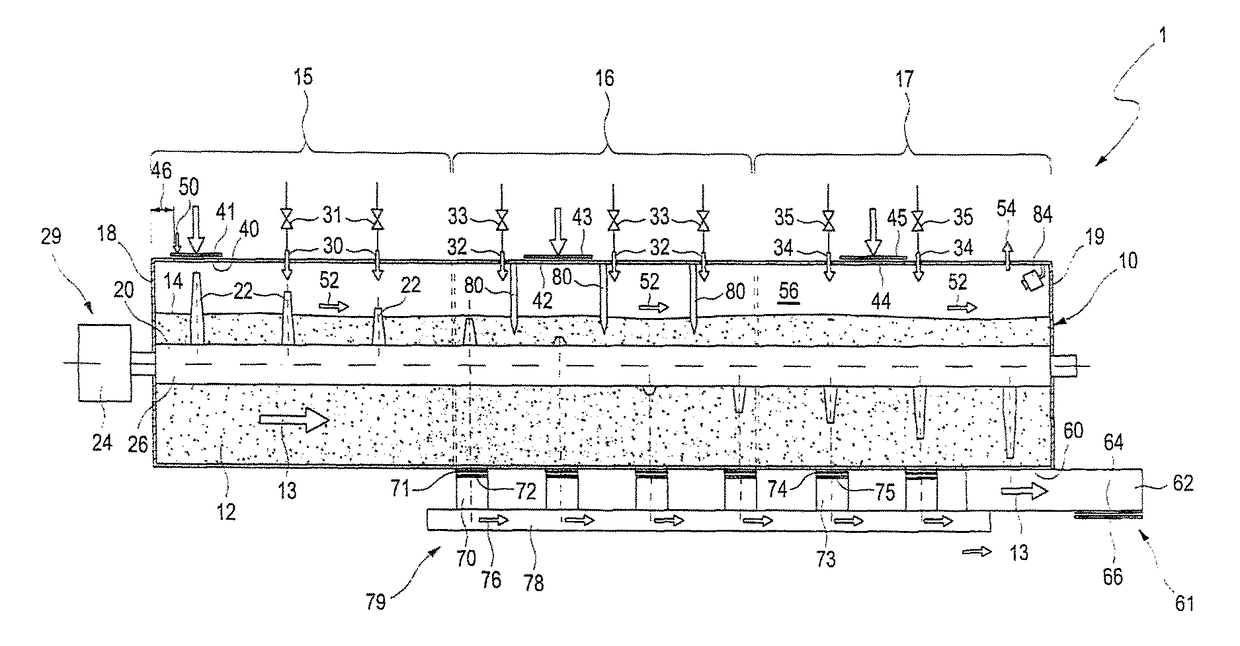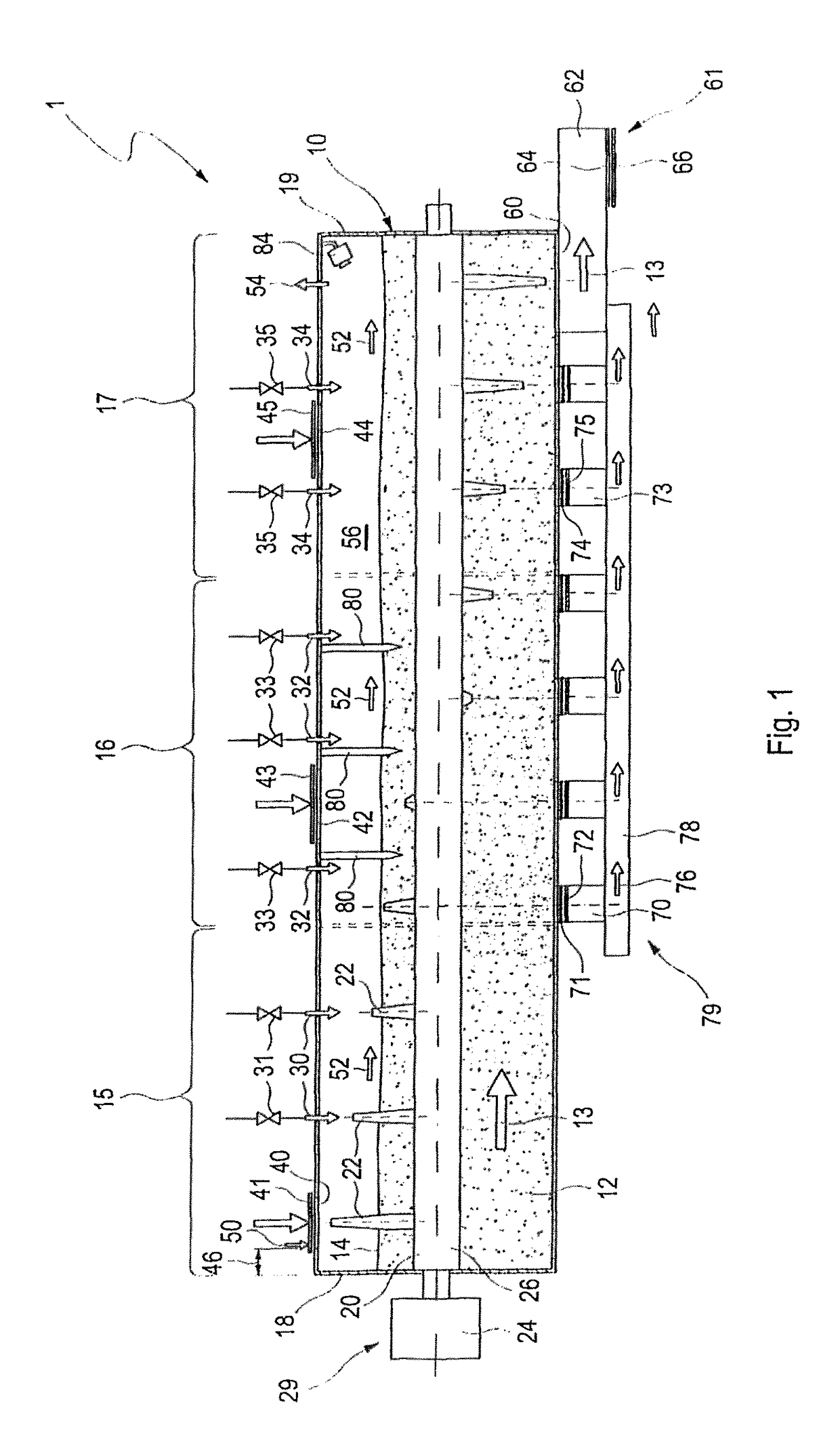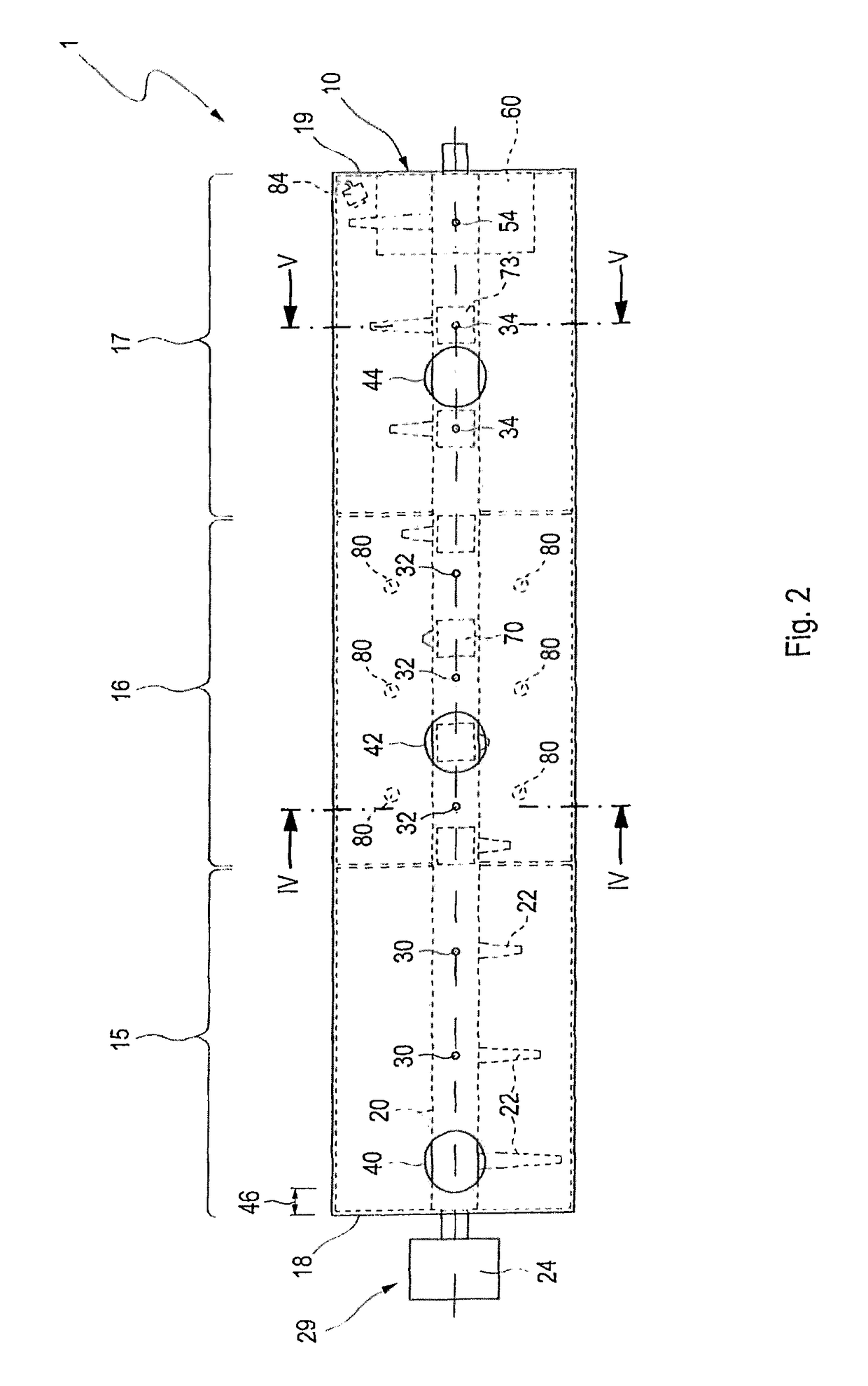Method and device for the mechanical or mechanical-biological treatment of waste
a technology of mechanical or mechanical-biological treatment and waste, which is applied in the direction of grain treatment, waste based fuel, fuel, etc., can solve the problems of high technical cost, large area and time consumption during the final rotting of such waste, and high water consumption, so as to reduce water content and water content. the effect of long residence time and reducing water conten
- Summary
- Abstract
- Description
- Claims
- Application Information
AI Technical Summary
Benefits of technology
Problems solved by technology
Method used
Image
Examples
Embodiment Construction
[0069]FIG. 1 shows a schematic illustration of the waste treatment plant according to the invention in an illustration from the side.
[0070]FIG. 1 shows a reactor container 10, which is embodied as a horizontal container. The length of the reactor container 10 is typically in the range from 20 m to 30 m. In the lower region, the cross section of the reactor container is preferably round, in particular embodied as a circular area. The diameter of the container 10 is between 3 m and 6 m. In the upper region, in addition to rounded geometries, angular, for example rectangular geometries, are also possible. Examples are given in the subsequent views from the front. The reactor container 10 accommodates an agitator shaft 20 which passes through the reactor container 10 along the entire length from the front end wall 18 to the rear wall 19. In the embodiment illustrated in FIG. 1, the agitator shaft 20 breaches the end wall 18 and the rear wall 19. On the side of the end wall 18, an agitat...
PUM
| Property | Measurement | Unit |
|---|---|---|
| length | aaaaa | aaaaa |
| diameter | aaaaa | aaaaa |
| diameter | aaaaa | aaaaa |
Abstract
Description
Claims
Application Information
 Login to View More
Login to View More - R&D
- Intellectual Property
- Life Sciences
- Materials
- Tech Scout
- Unparalleled Data Quality
- Higher Quality Content
- 60% Fewer Hallucinations
Browse by: Latest US Patents, China's latest patents, Technical Efficacy Thesaurus, Application Domain, Technology Topic, Popular Technical Reports.
© 2025 PatSnap. All rights reserved.Legal|Privacy policy|Modern Slavery Act Transparency Statement|Sitemap|About US| Contact US: help@patsnap.com



